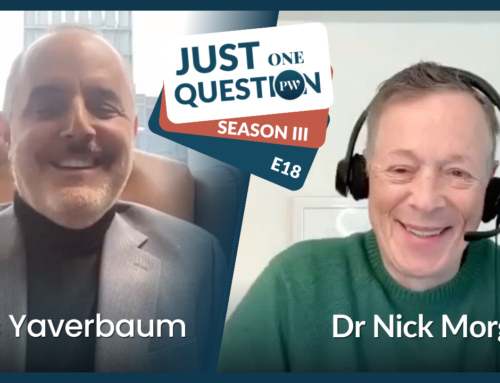As a nation, and a world, we’ve all pretty much stopped listening to one another. We’ve separated into tribes, and we demonize the other tribes as devoid of reason, humanity, and good sense. Social media is of course the carrier of this epidemic, if not actually the cause. But the deeper reason is that we live in a half-virtual, half-face-to-face world now, and that has changed the nature of our relationships, as I found doing the research for my recent book, Can You Hear Me? How to Connect with People in a Virtual World.
Underlying this lack of listening lurks a speeded-up world that has turned us into skimmers and all-too-rapid consumers of the huge amount of information we have to get through every day. And so we tend to choose information that confirms our biases and reinforces our tribal allegiances. Anything else takes too long and too much work.
More than that, it’s a frightened, angry, anxiety-driven world that means that we don’t have the emotional capacity to take on more of other people’s problems. Our own problems are too intense, too real to us, and too far down Maslow’s hierarchy for anyone else’s to compete. Will I still have my job? How can I pay my mortgage? Are my kids staying out of trouble?
For all these reasons, it’s easier not to listen to each other. As a result, real connection is rare. The further result is an epidemic of fake listening. It’s the kind of listening that really means the other parties are just thinking up what they’re going to say next, if they’re on the same conversational planet at all.
Here’s a quick primer on what to look for in other people’s body language to determine whether they are actually listening to you – that nearly extinct phenomenon – or the far more likely pretend listening. The eye contact is too fixed, and too still. He holds his head very still, as if to show that he’s really focused on you. Or she smiles too brightly, holding the smile too long. A real conversation is full of anticipatory nods and hand-offs of eye contact in order to allow smooth conversational Ping-pong. It’s relaxed and synchronized. Fake listening feels very different from that. It’s tense rather than fluid, abrupt rather than smooth, hyped rather than natural.
And that’s just the face. Watch the rest of the body. Is she turning away from you? Is he tapping his fingers? Is she pointing her feet toward the door? Is the other party in constant motion, in fact, never quite coming to rest during the conversation? These are all signs of Connection Deficit Syndrome.
We have a slow food movement. Let’s start a slow listening movement. Let’s take the time to connect with other people by being truly present. Begin by letting your own mind go quiet, and instead of chattering away to yourself – or planning your escape – focus on the other person with the intent to drink them in fully and completely. Next learn to listen with your whole body. Put all of your fidgets, postures, and grimaces at the service of presence. Don’t anticipate, simply listen. Take advantage of every face-to-face moment by allowing the other person to enter into your world without agenda, predisposition, or planned retaliatory responses. It’s time to get back to doing what we humans do best: use our empathy to form bonds with our fellow human beings.









Nick, you are very right. I have found a way to get them to focus on the material during my hour-long presentations like no other. As speakers, we do have to get them to engage in the message, not always an easy task before….until now.
Thanks for your words, keep em coming.
Thanks, Dave — remember, even a speech should be two-way. Not just a chance to get people to listen to you.
It is all to easy to find the channel that is playing our song. Unfortunately we are missing out on great music coming from the station we ignore.
Thanks, Michael.
Thanks Nick,
the tribalism issue is huge, and so devisive in our society today.
Of course it’s not new, since wars are being fought today over Tribalism issues hundreds of years old.
Observing the news, and social media we are bombarded with, it’s so obvious how we can be manipulated by the tribes.
Hopefully there soon will be a day when John Q public wakes up and realizes how we are being manipulated by the tribes, and start being fast and earnest listeners, and a bit slower talkers.
i’m working on it, but it’s not easy.
Thanks, Dutch — you’re right about tribalism being an old issue. The word itself is old, after all. It’s just that its current form, exacerbated by social media, seems like a new kind of intensity.
Hi Nick
Empathy is indeed the path to better communications, better connections and better relationships. Empathy and communications are two vital subjects which we need to learn from the cradle to the grave.
I love this quote “Stories teach us empathy. They reveal to us ourselves in the skins of others.” by Justin Simien.
Thank you for your emphatic blog.
Kindest regards
John
Thanks, John — empathy is indeed the essence of how we connect with one another.
We all have something in common. You have to find that out and build a relationship which will lead to people who listen to each other.
The common thing may be nothing to do with your business but it helps to break down that non listening barrier.
This week I’ve been focusing on becoming a better listener. I need to get better at being genuinely engaged – not just anticipating what people will say. As you said, I need to slow down, quiet my mind, and listen more fully. My friends and other speakers have great things to say! Great timing on this post.
Great stuff, Lynn!
Very well written and excellent insights.
Thanks, Mark!